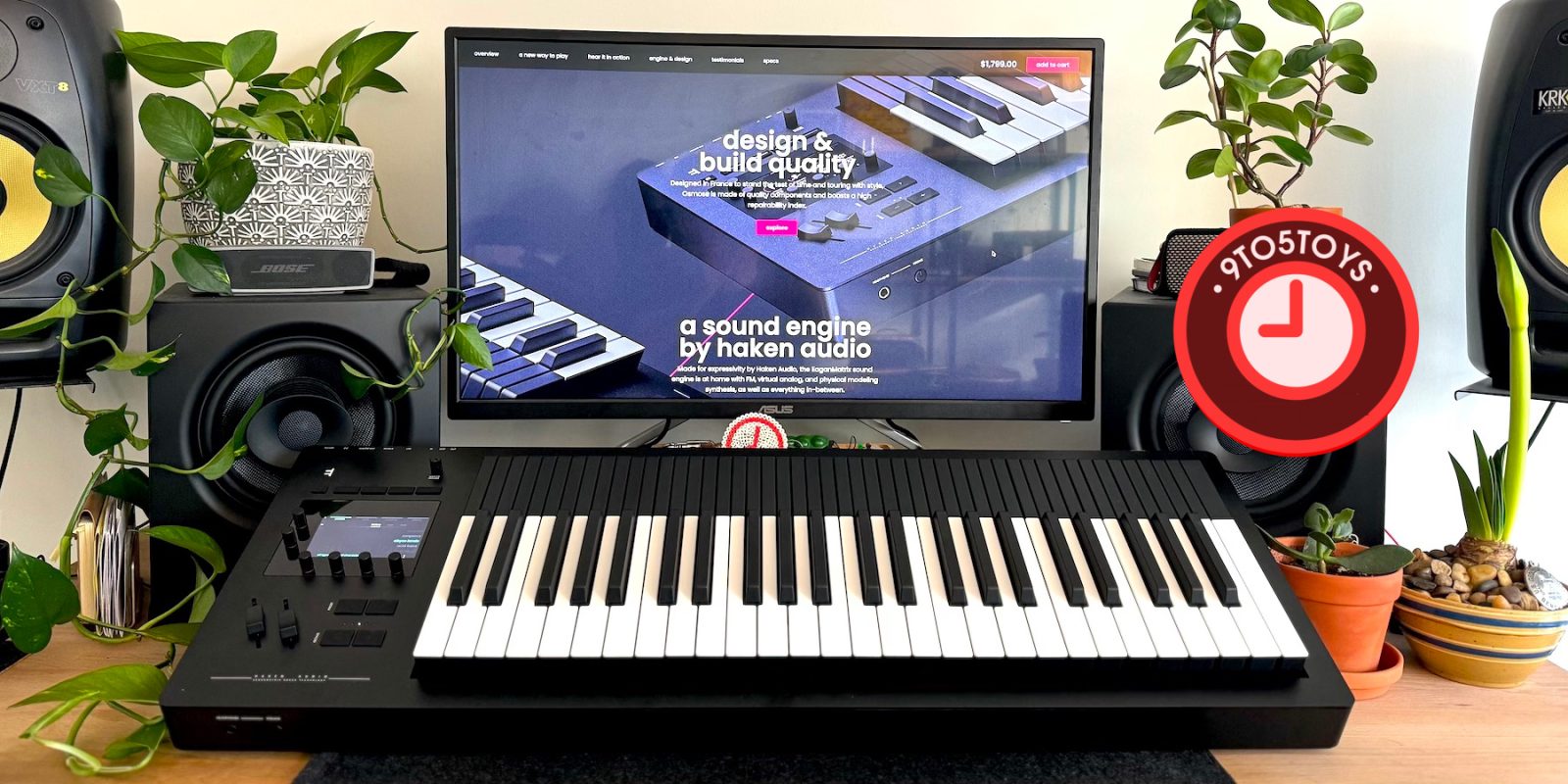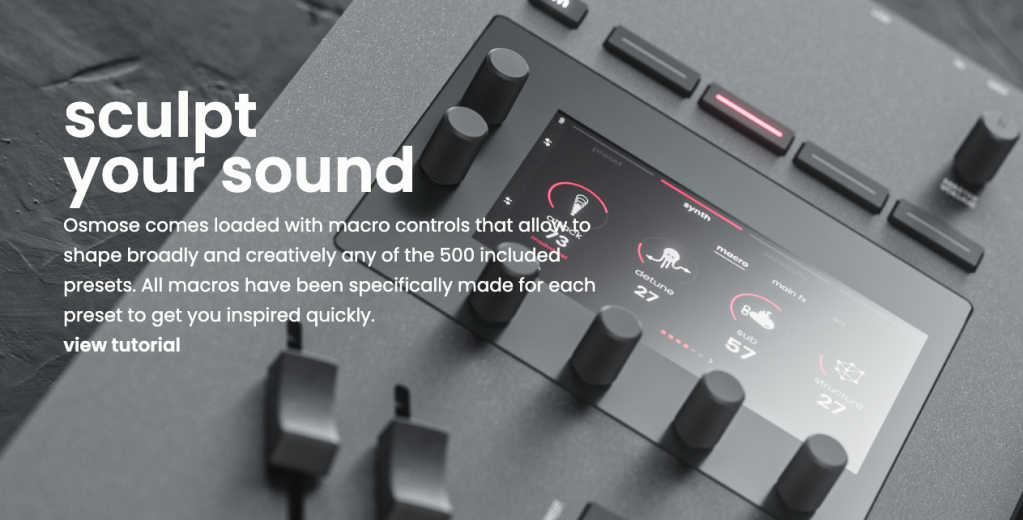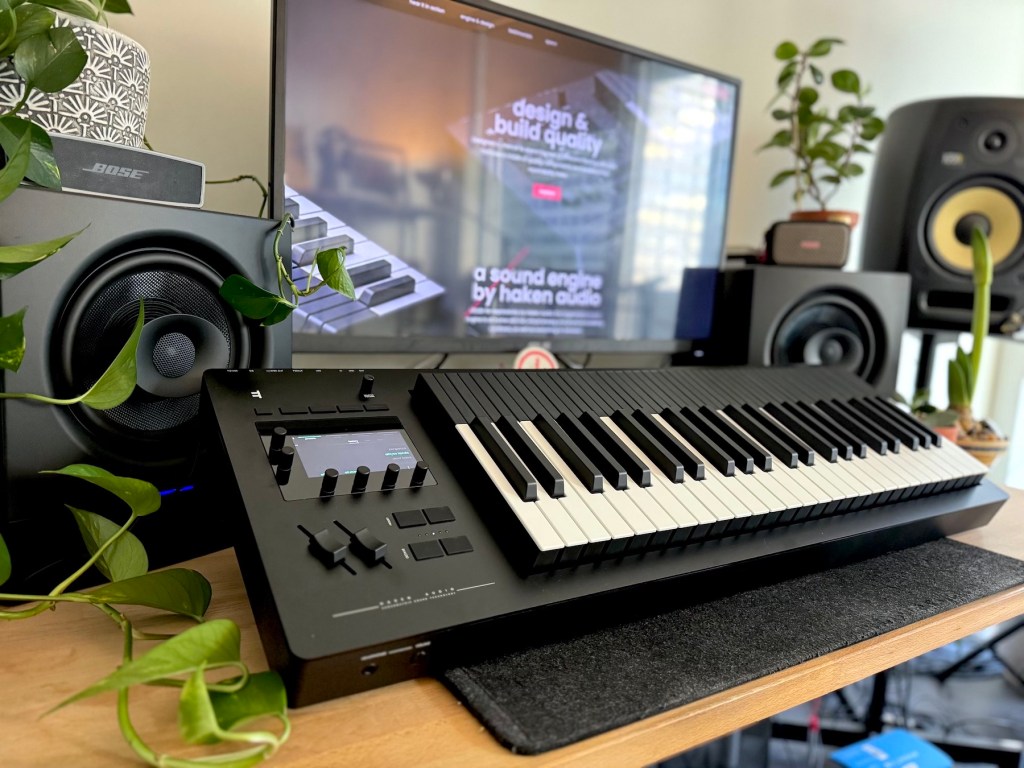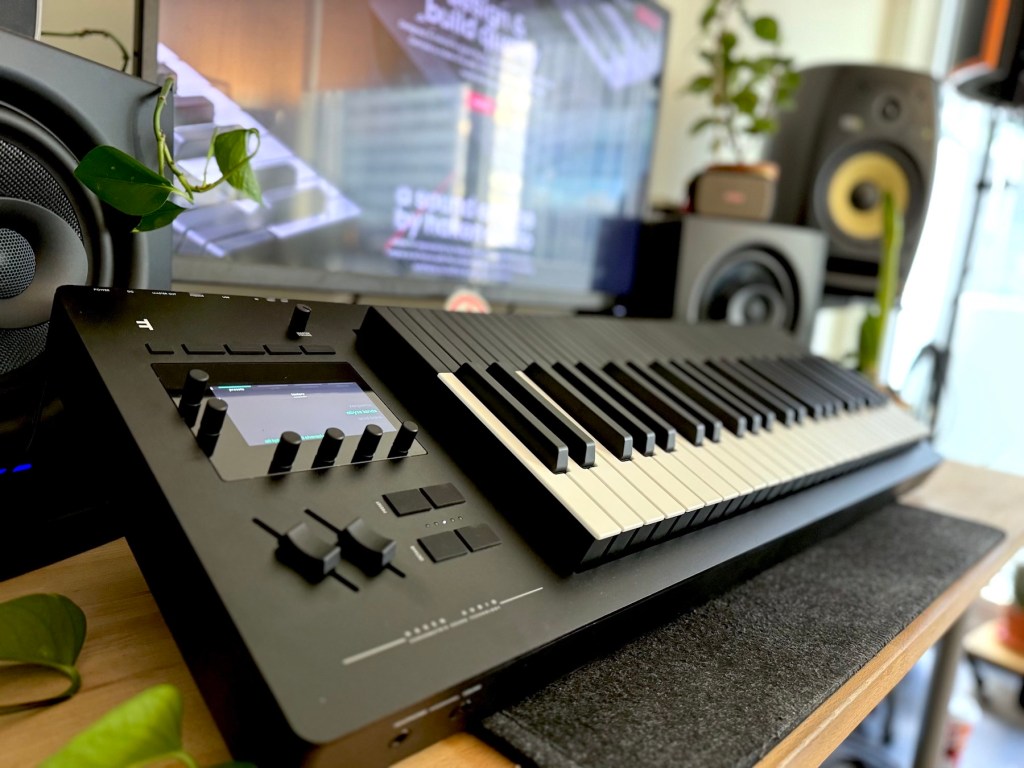
Not all MIDI keyboard controllers are made equal and the new Expressive E Osmose is a great example of this. Now available stateside, the new 3D gestural music instrument and controller is ready to grace home studios, live performances, and professional sound stages everywhere. If it’s not the best MIDI keyboard controller out there, it is certainly one of the most interesting, not to mention being an incredibly compelling standalone instrument. Taking on the form of a traditional piano setup, it is anything but traditional in its execution. Head below for our hands-on impressions of the Expressive E Osmose 3D gesture-based music controller and instrument.
Expressive E Osmose review
Expressive E Osmose is a multi-gesture keyboard and digital instrument with 49-full size keys, 24-voice polyphony, plenty of I/O (detailed below) and a better than average color LCD display. You’ll find a modulation slider (pre-assigned for each of the preset sound patches) and a sort of spring-back pitch bend slider.
- 49 full-size keys with three-dimensional control
- Standalone synthesizer, MPE MIDI Controller, and classic MIDI controller
- EaganMatrix, a digital modular engine by Haken Audio
- up to 24 voice polyphony
- color LCD screen, pitch and modulation sliders
- 2 continuous pedal inputs, assignable to sustain or synth parameters
- DIN MIDI In, MIDI Out/Thru, USB Type B
- two 1/4″ TRS pseudo balanced line outputs, 1/4″ TRS headphone output
Onboard LCD display
The roughly 4-inch LCD display is really the heart of the operation, or at least where users access it. I found it, and the many functions it provides, to be a completely intuitive experience – no annoying shift button secondary clicks here folks. It is surrounded with function keys and rotary knobs, each of which intuitively placed around the display – because of the placement of the menus and functions on the display at any given time, it is immediately obvious which button to push or rotary knob to turn to control the system. You’ll see a list of preset sound categories, for example, immediately above one knob to flip through them, which will in turn bring up a list of sounds within that category above the knob to the right, allowing you to quickly browse through and then press the knob in to make a selection. This UI design approach carries through the entire system, whether you’re accessing deeper system settings, adjusting the arpeggiator, or tweaking effects, and so on.
The physical controls are overall simple, understandable, and useable – I felt like I was able to rip through the menus, FX, sounds, and everything else immediately without even looking at an instruction manual or YouTube tutorial.

Semi-weighted 3D gestural keys
But clearly the star of the show here is the very special semi-weighted keybed. These, if you haven’t already guessed, aren’t your average keyboard keys, despite otherwise looking like them. Not only do the keys react in wild and natural ways with special glide and other programmable options, but you can also press, bend, shake, wiggle, and strum them unlike really anything else out there to produce expressive sounds and performances in an incredibly organic manner.
The entire keybed is sort of physically raised above the base of the body of the instrument, allowing for a long throw and to accomodate the wiggle of each individual key – just so we are completely clear here, each key can be pushed down like usual but also actually physically move left to right as well, providing the sensation of shaking or adding vibrato similar to a stringed instrument, for example.

It’s more than just a simple up and down and left to right sensation here though. There’s an intense amount of after pressure – you can play the keys like normal or dig your fingers in even deeper to create and incrementally more intense sound. There’s a strum gesture that will trigger cascading notes automatically on a single key based on playing velocity. The Pressure Glide gesture allows the player to swing between two notes organically with the pitch sliding up or down based on the pressure applied to the keys.
The built-in sound engine reacts to all of these physical movements in an organic way, creating new tones and movement in pitch with every shake, rattle, and roll from the player. Each preset sound does something a little bit different in this regard depending on the settings, but it’s all very intuitive and natural sounding with plenty of customizable options available to the player from that point. It’s ummm….pretty amazing.
Sound Engine
The EaganMatrix sound engine is about as unintuitive as the macros Expressive E provides are easy to use. The sound engine the Osmose runs on is called the EaganMatrix – it is very complicated and would likely take years of constant use to master. However, you don’t really ever need to.
Each of the 500 preset sounds the Osmose ships with are made from the EaganMatrix somewhere buried well under the hood – think everything from the sound of physically modeled synthetic instruments that sound very organic to straight up analog subtractive-sounding synth sounds and FM tones. But there are macro controls available for each of them to customize the sound without ever going anywhere near the for music programming savants-only EaganMatrix. Each of the presets feature contextual tonal and sound controls that allow each of them to be customized in about as simple and intuitive a way as these sorts of controls could be. For a violin or bowed preset, for example, you’ll find macro controls for the bow noise, timbre, tone, vibrato levels, and more.
The macros aren’t groundbreaking and neither are the base presets here at first listen, but wow do they get special after you’ve had some time to really play with them.
One thing worth pointing out here is that if you do find yourself really digging in and loving the instrument over time, the EaganMatrix is the gift that keeps on giving. Yes, it will take some time to find your way around it, but if you do, even a little bit, the amount of sounds the Osmose is capable of with the 3D gesture control in tow is literally endless. I mean I could probably design new sounds from now until the of the end of time and still never get bored with it.
Much of the same setup carries over the to global FX, EQ, and compression options. You’ll find various echo and delay options, high and low pass echoes, and reverb on the FX side of things alongside a low and high-pass style EQ as well as a compressor with gain settings if you’re looking for some serious distortion action. There’s nothing overly crazy or special on this front, but it all sounds quite nice to me and is very easy to use.
Controlling other MPE instruments
One extra bonus here with the Osmose is that not only is it a standalone instrument but it can also double as both a standard MIDI keyboard controller and as a controller for other MPE software instruments. There is a bit of technical know-how alongside some trial and error here in my experience, but it can definitely do the job. You’ll have to tweak the internal pressure and sensitivity settings within the Osmose to play nice with other MPE software, as well as configure the software on the other end. It, understandably, doesn’t work as seamlessly with other software as it does with the internal engine at first, but it does work.
On this note, you can use the Osmose like a standalone instrument – plug it in like a guitar or something into your audio interface and record away. But you can also load it up like an external MIDI instrument inside your DAW as well. This can be handy when you want to quantize and edit your passages within the DAW and have them play back off the internal engine inside the Osmose before you record audio versions of the passages into your project. I, admittedly, have only used these features within Logic Pro, because that’s the DAW I use, and the setup process its relatively simple, but you will be able to get this going in Pro Tools and other comparable apps much the same – Osmose has some simple tutorials to follow to set it all up.

Expressive E Osmose review – Final thoughts
The Expressive E Osmose is a wild beast of an instrument – but not so crazy that it falls into a completely niche category. Sure, it’s not for everyone – beginners certainly don’t need a $1,799 multi-gesture digital synthesizer/controller – but it is clearly a wonderful machine for just about any other music maker, sound designer, or home producer.
It is a great option for music makers of all kinds, but I might suggest folks into the more soundtrack or film score side of things take a long hard look at Osmose. It is simply fantastic for horror and thriller-style pieces, as well as those wild, sickly, and emotional Trent Reznor-esque pads and flourishes you might be familiar with – you know the sound of that movie The Social Network…that. Everything from long, winding passages and delicate responsive plucks to weird and wild reactive noise and clicks, its built-in sound abilities are quite versatile, even before you attempt to program some for yourself. Add in some FX from your DAW or outboard gear, and you’re cooking with magic if you ask me.
It is a special instrument. One that slides nicely into the slowly growing list of options for those looking for something different, something more than just your average MIDI keyboard controller. There are a few really interesting multi-gesture, particularly expressive controller options out there, but nothing quite like the Osmose as far as I’m concerned. It, unlike many of the others out there, is a more familiar musical experience – anyone who plays piano or is familiar with your traditional MIDI controller can, for the most part, pick up and play this thing fairly quickly. The same can’t quite be said for some of what you might call the competition here. And for that reason, there really is no other competition in this price range. Some might think of the ROLI Seaboards or the Haken Fingerboard instruments – the same company responsible for the sound engine used inside the Osmose – but even those options, as fantastic as they can be, either aren’t quite as intuitive for folks familiar with the ol’ black and white ivories, or are wildly expensive.
The Osmose is a traditional keyboard in 3D. It’s a natural, and yet unique sounding synth with wild modulation and movement you don’t need to program with a mouse. It’s an actual musical instrument. It reacts to the expression only a human is capable of and understands a language your typical MIDI keyboard cannot – actual human musical expression. Catching every tremble, slip, shake, wiggle, and aggressive pulse only our hands and feet can produce, the Osmose’s unique keybed setup and internal audio engine actually react and translate all of it into sound.
Buy Expressive E Osmose
FTC: We use income earning auto affiliate links. More.







Comments